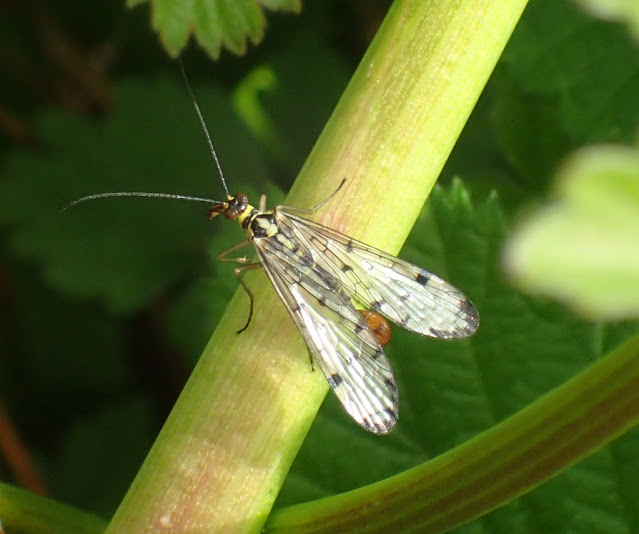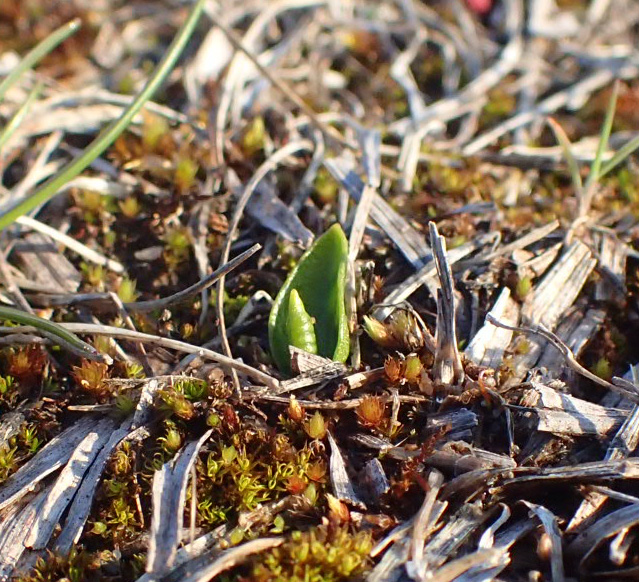Another small arrival of migrants, the pick of which were two female Whinchat, three Wheatear, three Willow, three Reed and a Garden Warbler. Overhead 41 Swallow and a Sand Martin. Blackcap, Chiffchaff and Whitethroat are on territory, the first Little Grebe nest has hatched with three young on the Main Pond and the first fledged Stonechat of the year was on the Golf Course.
Offshore the two immature male Eider, have returned from a brief trip to Hope's Nose, Torquay; with 17 Common Scoter, 12 Sandwich Tern, six Great Crested Grebe and a/the pale phase Arctic Skua also present. In the estuary, 92 Dunlin, 41 Ringed Plover, 32 Whimbrel, two Sanderling and the Dark-bellied Brent Goose.
Wildlife News: Few insects on the wing in the overcast and wet weather but a migrant Diamond Back Moth was flushed on the Golf Course. The wet weather has brought out a good showing of spring fungi, including Common Inkcap and Brown Birch Bolete, plus many unidentified species. One distinctive species was new for the Recording Area, Coccomyces delta on decaying Bay Laurel leaves.











































